Let’s face it, you’re a neurotic audiophile like me who wants to squeeze every ounce of performance out of your music and your system. If you’re looking for the best possible audio quality as far as digital music is concerned, then you certainly have come here wanting to know what the differences are between FLAC (Free Lossless Audio Codec) and ALAC (Apple Lossless Audio Codec).

So, you’re waiting for me to tell you that ALAC has sweeter highs and that FLAC has better bottom-end authority, right? Or perhaps you wouldn’t be surprised if I told you that FLAC sounded a bit more detailed and open but ALAC had a better soundstage?
Guys, I’m sorry, but the answer is going to be way too boring—at least at first. From an audio perspective, there’s no difference between FLAC or ALAC files that are recorded at the same sampling rate. That’s ultimately the case because all FLAC or ALAC files are compressed versions of a “lossless” original, which means that the original file, when compressed in either format to make it smaller to store and transmit, doesn’t lose any of its quality when it’s played on your system.
So, if the difference isn’t audible, then why are are you here and why do you get the sense that there’s such a zeal and fervor over the FLAC vs. ALAC battle? It has nothing to do with audio quality and everything to do with the perceived—emphasis on the word “perceived”—Apple ecosystem lock-in and consequent player choices.
To oversimplify things, ALAC is an Apple-based solution to compress lossless file while FLAC was initially developed as an “open” format. Some high-res audiophile music download sites, like HDTracks, will give you both ALAC and FLAC, or they will give you just one and not the other. This has everything to do with their long-term disk storage and nothing about audible differences or that one format is “better” than another.
So, you can do all the reading you want, but all issues basically boil down to two simple points:
- Non-Apple people generally don’t like Apple-specific technologies (I acknowledge generalizations are dangerous!)
- iTunes doesn’t play FLAC files
The primary argument you’ll hear against ALAC is that it’s an “Apple” technology and users don’t want to be locked into Apple technologies in any way shape or form and want their stuff to be open source and royalty free down the road. I’m not here to take a stand one way or the other, but rather to say this is what I’ve primarily heard as the main points why people are against ALAC.
To date, I haven’t seen anything that supports this perspective in a substantive way. Perhaps someone could post a comment in case I’ve missed something. Personally, I’ve found it very easy to convert between ALAC and FLAC and between FLAC and ALAC.
I wrote a how-to-article on the topic here if you’re interested. So to the first point, I would simply say it’s all personal preference and don’t worry about it.
The second issue, and likely more major issue, why people are looking at the differences has more to do with the fact that iTunes does not play or support FLAC files natively. Why is that? Well, I honestly don’t know but if Apple does have a technology, such as lossless codecs, they sure do tend to support their own vs. other standards. Again, that’s neither here nor there but rather just a fact. So, if you do use iTunes as part of your ecosystem, then you certainly do want to have all your high resolution files in ALAC format and not FLAC. You can then play the ALAC files not only on iTunes but also on your iPod, iPhone, iPad, and any other iOS-based device.
If you do insist on keeping your files in FLAC then you really have two choices:
- You can add an application on top of iTunes to play FLAC files or
- You can move to an iTunes alternative
If you choose to keep iTunes, then I recommend that you go with either
PureMusic or
Amarra. Both will solve the FLAC support in iTunes issue and you’ll find people who swear about sonic differences between the two. That’s for another article 🙂
The second option you have is to move away from iTunes altogether and go to a media player that supports FLAC. Options for this course of action include
JRiver or
VLC. JRiver is probably the closest thing to iTunes you’ll get as an alternative. I find that the interface is familiar and it has lots of great features. I personally view VLC as more of a stand-alone player than an iTunes replacement.
So, if you came here looking for audible differences between ALAC and FLAC, you obviously won’t find them. What you hopefully did find is some of the ecosystem-related issues that make some people prefer one over another for their lossless codec of choice.





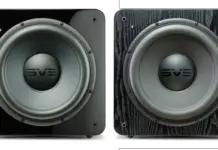
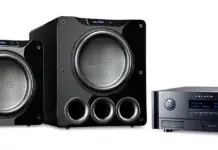


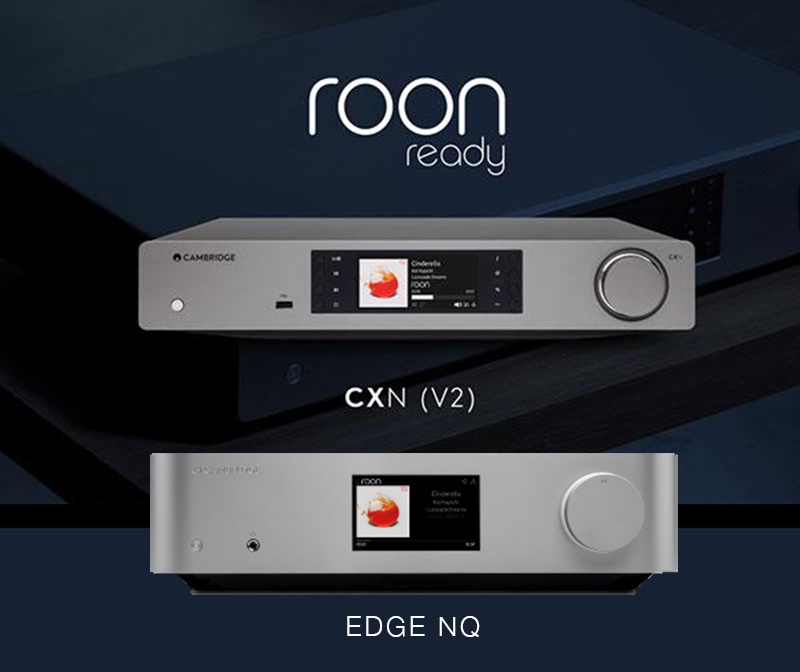

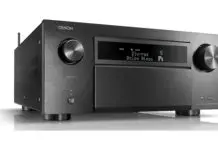
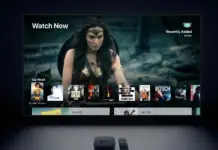

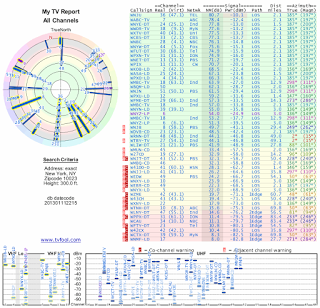


First. Liked your article very much and completely agree with your take on the two CODECs. Good news, in late 2011 Apple made the ALAC (M4P) codec available open source and royalty-free. In spite of that, FLAC supports a few more high-end features, like a sample rate maximum that tis up to 2x higher.
Because the average user can totally perceive those extra bits and samples, and samples represent instantaneous diaphragm movements, except they can’t and don’t… extra bits go straight to high-frequency noise, extra samples don’t help anything if the diaphragm can’t keep up. Love me some flubbin’! I’d love to see someone who can pass a 96KHz vs. 192KHz orchestral test… or, actually, I’d love to see a proper site somewhere having that test, actually. :/
Sometimes just extra noise can make an audible difference, not much, but your music sounds airy, and spacious. for me it is just an high-end opencan headphone vs higher-end opencan headphone.
Anything less than 320KHz is a no-no, listening to orchestral music actually feels like pop/rock song in a poorer acoustic stadium.
ALAC has no error detection, and no way to detect corrupt files, which makes it unsuitable for, well, basically anything.
nothing on file size, eh?
Files sizes will be near identical.
The three previous commenters make excellent anti-ALAC points, to which I would add the following regarding the "reviled" Apple ecosystem: iTunes and ALAC do not support embedding ratings in track tags, while most FLAC editors do. This may not be a big deal for people who don't use star (or now "love") ratings in their libraries, but it can be a pretty convenient way to build and edit auto-sync playlists. For instance, I typically make the decision to remove a track from my portable devices while I'm listening to it -it's nice to know that I can lower the rating on the device, and the next time I sync it, the smart playlist I built (which uses rating info as a criteria) will remove the song automatically. Wipe out your iTunes library, or delete and subsequently re-import your music, and all your ratings are toast.
Here's another dealbreaker: I use a NAS to stream my FLACs over the Internet. One of the options is to leave the originals intact, or transcode them on the fly to a lossy format (for lower bandwidth devices). When I stream FLACs, they transmit as FLACs. When I stream ALACs, they get transcoded to lossless WAV files that gobble up two-to three times as much bandwidth in transit, and space on the receiving device's cache.
There are a lot of other nuances to file handling that make ALAC and iTunes a poor substitute for FLAC, but when you add up all the petty grievances of both formats, it may just be a wash. It all comes down to which format fits your specific workflow needs.
if i have flac files, is there some kind of quality loss when converting to alac
By definition, no. It’s like unzipping a ZIP file, then taking the folder an ZIPping it back up—exactly like that.
Please site your source of your going to make such a huge statement as ALAC is unsuitable for anything. I don't see where this error correction comes into play as I have made FLAC to ALAC but perfect conversions.
I don't think you are correct on this or if you are I don't think it matters in the way you say it does.
Total fanboy.
Total non-answer. For a real answer:
Error correction is useful if you’re transmitting your audio over unreliable links, for example, streaming from the internet or over a cellular connection. As the audio is divided up into short packets of sound (samples) in order to hear what you expect when a packet goes missing, most algorithms will attempt to fill in the missing space with what it thinks would sound right… given the samples around it that it does have. This “corrects” for the error by inventing sound it doesn’t have a record of; there are other techniques, but this is one of the more important ones. ALAC doesn’t have this, making it primarily suitable for permanent storage and retrieval from reliable sources such an SSD/HDD, not for streaming or for use in VoIP… which no-one is suggesting to do.
It’s certainly NOT “unsuitable for anything”. And having a technical understanding of why a “fanboy” does not make.
None
I'm a professional DJ and our standard equipments (that is Pioneer's CDJs) doesn't support lossless format so basically all our digital music collection is in AIFF format (no WAV because of the tags).
However, for me the ALAC vs FLAC war is pretty much simple –> Nearly 100% of the mobile device in the world can play ALAC (I haven't tried Windows Phone) and more than half can't play FLAC. Problem solved.
I've converted all my FLAC files to ALAC and never had a problem. I've been in the industry long enough to know that "never" is a dangerous word. I've had nothing but superb experiences with converting files to ALAC.
There are additional pros and cons to each file format and the value one lays on each will be determined by the players and overall ecosystem. That's personal preference at the end of the day. The crux of the article is focused on audio quality. There's no difference between FLAC and ALAC with songs encoded at the same bitrate.
Tortue is correct. None whatsoever.
Happens to me too when i convert using foobar2000
ALAC doesn't have error detection but the file systems your store your file on or the networks you transmit the file over has error detection and correction. The additional error detection correction of FLAC maybe useful for niche archive purposes.
I have a decent sized FLAC library, I play them through foobar but when its a song I will want on my iPod I just use DBPoweramp to convert to ALAC. No sound quality loss and works for me b/c not every FLAC file I want on my iPod
Well Pierre has a point – not that ALAC is useless because it lacks error detection, but rather that FLAC is more useful. Besides not all network transmissions use error correction, it depends.
If you get filesystem corruption that is detected by FLAC checksums and not by your operating system, you have way, way bigger problems. If you stream the file over any (ANY) TCP-based filesharing protocol (SMB/Samba/CIFS, NFS, AFP, etc.) then you get error correction at the TCP level (or protocol level, since some are hybrid) for free. This includes HTTP! (But obv. not RTSP, which is UDP.) If you use ALAC for realtime VoIP over UDP, you’re already doing everything wrong; this is not a use for ALAC. It’s not even a use for FLAC; use a real streaming codec and be kind on your listener’s bandwidth caps…
With the number of variables in a hi-fi setup these days, and the pace of change/evolution in each separate area of technology, it's possible to get pretty confused (despite or because of da' Google). This piece is helpful, took time to do and I appreciate that. Thanks!
Thanks JJ!
Couldn't agree more. From my vantage point it's about personal preference not because there is a sound quality difference between the two formats.
To add, those same nearly 100% of mobile devices can play FLAC just as easily as they can play ALAC by simply installing an application to play the file format.
On my android phone with a pair of yamaha earphones i hear a clear difference between mp3 and flac.
The flac sounds more vivid and the guitars sound more realistic and sharper.
But when using the earbuds that came with the phone i cant hear any difference.
So my conclusion is that it also depends on your gear
Edit, forgot to mention thst in my home setup that has aluminium high pressure speakers i can hear a little difference between 16bit and 24bit flac, but not on my phone with even my 300 us$ yamaha headphones.
This comment has been removed by the author.
I personally prefer ALAC because most of my listening is done on my iPod Classic that I had modified with a 480GB solid state drive, and that thing is bulletproof compared to most phones/ipod touches etc, and battery life can be measured in days not hours. I prefer using iTunes too when files are properly tagged, because it is an interface I’m used to and it works great if you have properly tagged files.
FLAC is great too, don’t get me wrong, but this sums it up for my usage:
Tortue:
“However, for me the ALAC vs FLAC war is pretty much simple –> Nearly 100% of the mobile device in the world can play ALAC (I haven’t tried Windows Phone) and more than half can’t play FLAC. Problem solved.”
Also ALAC files tend to be smaller than FLAC by around 5-12% on average.
FLAC VS ALAC is probably important to the ecosystem and both produce the same sound quality. My question – what is the difference in the internal file structure; do both formats store the digital portion in the same format with just a different container? When using a converter to convert from FLAC to ALAC or ALAC to FLAC, does the converter just change the meta data tags or is the entire file converted?
Yawn – just use .wav files. The codec du jour will always change, but .wav will always be the top standard
I’m sticking with FLAC because a good number of them I have are Hi-def 32 bit [and higher] stereo with an even better sound than the standard 16 bit stereo FLAC files. I’m not sure ALEC are available in the higher quality sound as these Hi-def files. There are also Hi-def music players on the market now which far surpass the I-pad or I-anything you’d play your music on. Apple’s fine for the average person but just doesn’t meet the needs of those who’d like their music at maximum quality available.
Unless someone can tell me different, that’s been my understanding till now.
That seems an odd choice as I’ve just switched from an Ipod classic to a Sony Walkman and have found while Flac and Alac sound the same on my Sony, the same Alac files sound way better than they did on my Ipod classic.
I’ve kept the same headphones and so it’s a reasonably fair test (Ipod was a bit old and Battered) and had noticed before how much better my songs sounded on iTunes than they did on the Ipod itself.
That should be at Alex.
The only difference is the bottom line, Apple doesn’t do FLAC. So I don’t do Apple.
Tortue:
“However, for me the ALAC vs FLAC war is pretty much simple –> Nearly 100% of the mobile device in the world can play ALAC… and more than half can’t play FLAC.”
Really? What a nonsense.
Ability to play FLAC and/or ALAC is in the application (i.e. player) not the smartphone hardware. Just pick the right app, George. Problem solved. And who will use the smartphone to listen lossless audio anyway? The amplifier used in the smartphone will not give you any advantage comparing to MP3 files, which are much smaller, thus more convenient.
People with DragonFlys listen to lossless on a mobile device, and it sounds awesome!
Firstly I really like your articles, but when it comes to FLAC & ALAC comparison, I’d like to note a considerable difference between those two – ALAC IS SLIGHTLY FATTER IN SIZE ! Whenever I buy a song from Bandcamp, I always see that ALAC is 10-40% larger in size.
So does FLAC’s better compression make it superior ?
And isn’t Flac is more user friendly ? I mean I have to run a checker software to tell if the files is encoded in AAC (Lossy) or ALAC (Lossless) as they both have same file extension.
We can’t just look at the extension and tell if it’s lossless or not. Shame.
True that, however you can simply look at the ratio between file size and song lenght, that will tell you if it’s lossy or not. I agree it’s not the smoothest solution though…
An ALAC file needs to be converted back to an uncompressed file to get CD quality sound. It allows a low quality preview when run directly. It is about 1/2 the size of the original uncompressed file making it good for transferring files over the internet and storage. The ALAC lossless file archive is a lot larger than lossy music file formats making ALAC or poor choice for run time music.
I love this site. One question on FLAC and ALAC. I notice that ALAC IS SLIGHTLY FATTER IN SIZE! I generally observe that ALAC is 10-40% bigger.
So does FLAC’s better compression make it predominant ?
Comments are closed.